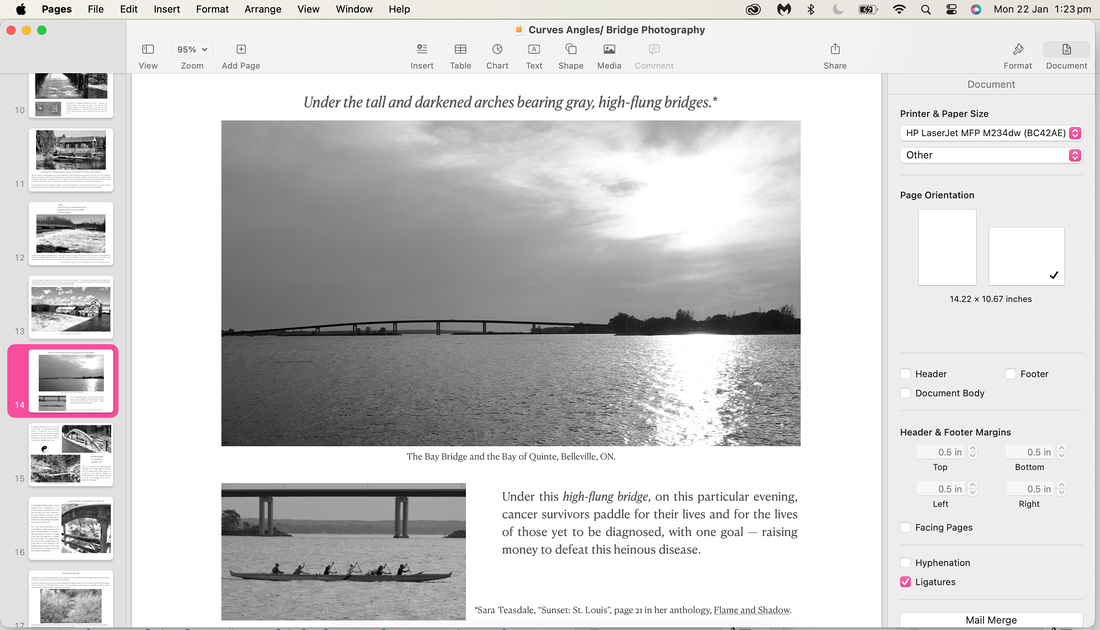Writing Worries III - Cogitatio
“You don’t actually have to write anything until you’ve thought it out. This is an enormous relief, and you can sit there searching for the point at which the story becomes a toboggan and starts to slide.”*


So far, no toboggan, no sliding!
Cogitation, from the Latin cogitatio (thinking/thought).
The Hardest Part of Writing is cogitation. Thinking. Contemplating the message I want to convey and then converting those thoughts into words. I’ve been told more than once that if you can think, you can write. Here’s the thing; those who know me the most intimately will tell you that thinking is what gets me into trouble. Over and over again!
As suggested by the CBC creative writing team, I’ve been scheduling two hours each afternoon to sit quietly and work on my book. I think it is working - my goal is 100 pages/100 bridges and I’ve completed 83. I have 12 images ready to go and I’ve fleshed out their accompanying tales but I’ve had trouble actually writing them (which is why they remain unfinished). I’m also dithering over which of my remaining bridges to use for the last five pages. (Perhaps 100 was overly ambitious.)
Writing is hard for me because, ‘though I usually have a sentiment in mind, the words - at least the right words are often elusive — they don’t come flying out of my fingers when I type. I have such high expectations (hopes?) for my bridge book and those can be an enormous and paralysing burden.
One of my fiercest champions is Dr. McEricher at A & L. Complaining that, whenever I try to wrangle my thoughts int0 words and force them onto the page, disaster strikes, that venerable professor offered this advice: Just think about that one page/one bridge at a time. Be mindful that you’re not writing a textbook, you’re spinning a yarn about your favourite bridges.
His other pearl of wisdom was to name my “whys”:
- Why include this bridge?
- Why did you react to this bridge?
- Why did you like this bridge?
- Why did this bridge stand out for you?
- Why did you experience an emotional connection with this bridge?
- Why will your reader want to know more about this bridge?
His summation: Only when you have the answers to those questions can you begin to weave your narrative - whether it be serious and sensitive or fanciful and fun.
Sounds so easy when phrased like that, doesn’t it?
Cogitationis poenam nemo patitur.
[Nobody endures punishment for thought.]
It’s writing time. I’m going to tackle one of the “problem bridges” using my newly minted name my whys strategy. Today there will be a lot of thinking time but, as any good defence lawyer will tell you, mere thought is not punishable by law - cogitationis poenam nemo patitur.
’Til next time, y’all…
*Marie deNervaud